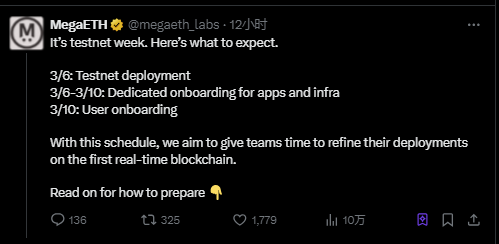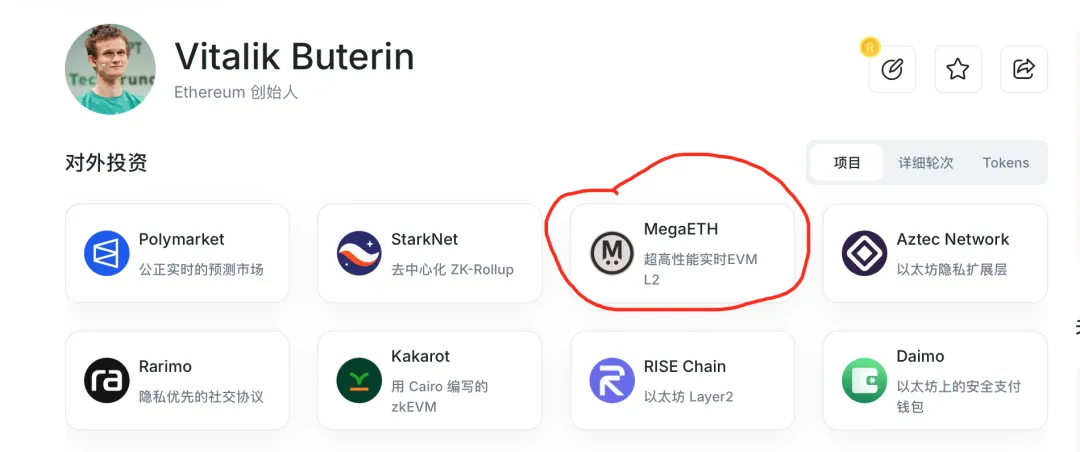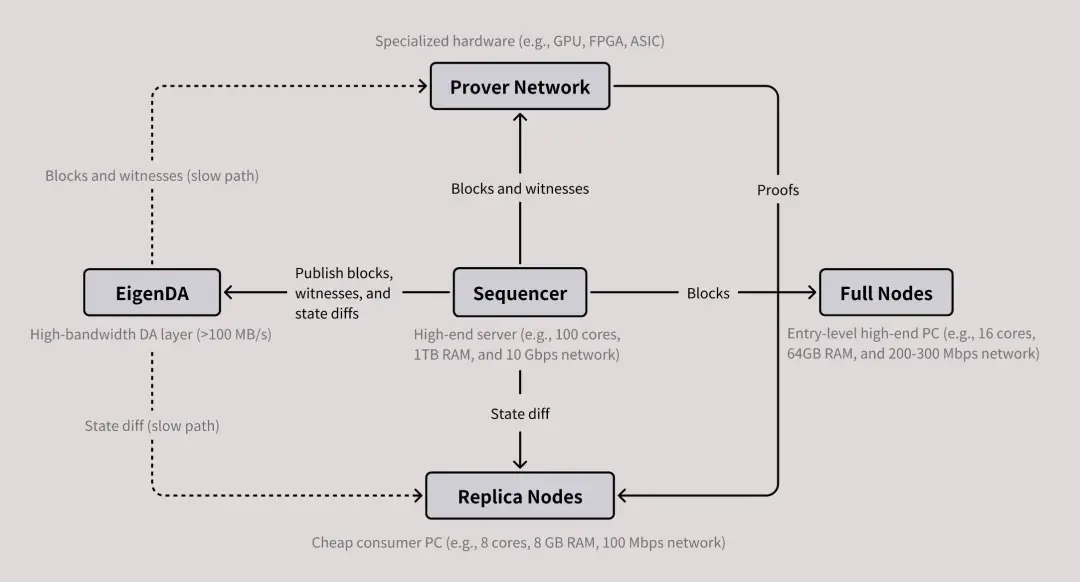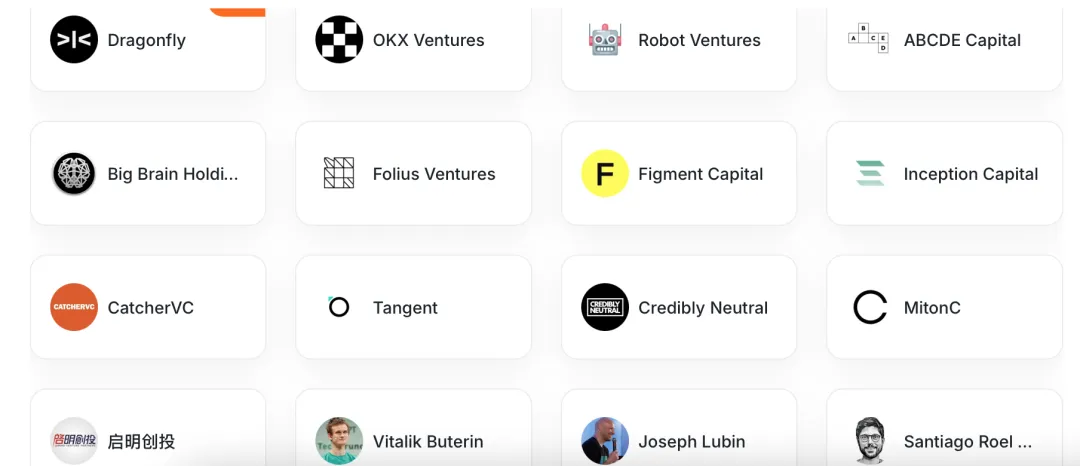Author: Alvis
Introduction: Ethereum’s dilemma and Layer2’s breakthrough

The crypto market in 2025 is undergoing a profound reconstruction of value. Ethereum mainnet transaction volume continues to shrink, gas fees remain low, and the TVL of leading Layer2 projects such as Arbitrum and Optimism has shrunk by more than 40% compared to the peak in 2024. When the industry is questioning whether the Layer2 narrative is over, a project called MegaETH is about to launch a public testnet on March 6 with a technical declaration of "100,000 TPS + 1 millisecond delay", $30 million in financing, and Vitalik Buterin's platform.

MegaETH receives direct investment from Vitalik Buterin
Is this counter-trend charge a prelude to disruptive innovation or a bubble created by capital? This article will deeply decode it from three dimensions: technical anatomy, ecological game and market timing.
MegaETH Technical Panorama: Reconstructing the Layer2 Performance Ceiling
MagaETH Introduction:
MegaETH is a Layer 2 blockchain designed to enhance the scalability and performance of Ethereum by enabling real-time transaction processing. It is compatible with the Ethereum Virtual Machine (EVM). MegaETH is designed to achieve unprecedented performance levels, capable of processing more than 100,000 transactions per second (TPS).
MegaETH plans to begin deploying its public testnet on March 6.
The deployment will be carried out in phases. The testnet will be officially deployed on March 6, marking the beginning of the network's opening to the public.
From March 6th to March 10th, the focus will be on onboarding application and infrastructure teams, allowing developers to perfect their deployments and adapt to MegaETH’s architecture.
1.1 The "Triple Engine" of a Performance Monster

MegaETH claims to be the "first real-time blockchain", and its technical architecture directly addresses the core pain point of the current Layer2 - the contradiction between performance and decentralization. Through three breakthrough designs, the project attempts to push the EVM ecosystem to the hardware limit:
Heterogeneous node architecture: Network nodes are divided into three categories: sequencer, full node, and verifier. The sequencer uses a customized server to store the EVM state tree completely in memory, achieving a state access speed 1000 times faster than SSD; the full node synchronizes state differences through a point-to-point protocol to avoid repeated calculations; the verifier focuses on generating zero-knowledge proofs. This "specialized division of labor" centralizes key performance tasks while keeping security verification decentralized.
Ultra-optimized EVM execution environment: Introducing a real-time JIT compiler (Just-In-Time) to dynamically compile smart contract code into native machine code, eliminating the performance loss of traditional interpreters. Testnet data shows that the execution speed of computationally intensive contracts has increased by 100 times. In addition, the project has reconstructed the state tree structure and adopted a Merkle-Verkle tree solution to reduce disk I/O operations by 90%.
Sub-millisecond consensus mechanism: Through pipelined block production, transaction sorting, execution, proof generation and other links are processed in parallel. The initial test network has achieved an effective block time of 15 milliseconds, which is two orders of magnitude higher than Optimism's 2 seconds. The team claims that after the main network is launched, the single-thread throughput can reach 1.68 Ggas/second, which is 50 times that of the existing Rollup solution.
1.2 Data measurement: test network performance analysis

According to the official disclosure on March 4, the following capabilities will be available in the first phase of the testnet:
- Throughput: 1.68 Ggas/second, which can support about 5,000 simple transfers per second
- Latency: End-to-end confirmation time ≤ 15 milliseconds (including network transmission)
- Fee model: The cost of a single transaction is less than $0.001, which is two orders of magnitude lower than Arbitrum
It is worth noting that these data are based on a single sorter mode and have not yet demonstrated scalability under multi-node parallelism. The team said that in the future, the TPS will be increased to more than 100,000 through sharding technology.
Capital Game: The Strategic Ambition Behind $30 Million
2.1 Financing landscape and community of interests

MegaETH’s capital story is full of “top-level configuration”:
- $20 million seed round (June 2024): Led by Dragonfly, with participation from Ethereum "establishment figures" such as Vitalik Buterin, Joseph Lubin (founder of ConsenSys), and Sreeram Kannan (founder of EigenLayer)
- $10 million community round (December 2024): completed through the Echo platform, using an "equity + token warrant" structure, with a valuation of hundreds of millions of dollars
- NFT Financing (February 2025): Issued "The Fluffle" series of NFTs, raised 4964 ETH (about 13 million US dollars), and holders can enjoy 5% of the future token airdrops
Vitalik’s deep involvement is particularly interesting. As the founder of Ethereum who rarely invests directly in projects, his bet on MegaETH is seen as a “vote of no confidence” in the existing Layer2 technology route. Industry insiders speculate that Vitalik may want to use MegaETH to verify the “modular blockchain” theory, that is, to achieve a balance between performance and security through the combination of a dedicated execution layer (MegaETH) + consensus layer (Ethereum) + DA layer (EigenDA).
2.2 Ecological Positioning: Full-chain Games and DePIN’s “Infrastructure Bet”
MegaETH’s early adopters are concentrated in two categories:
- Full-chain games: Projects such as Dark Forest and AI Arena have announced their migration to the testnet, using millisecond-level delays to implement real-time combat logic
- DePIN (Decentralized Physical Infrastructure): Scenarios such as high-frequency sensor data on-chain and real-time edge computing require ultra-low fees and deterministic latency
- This "vertical scenario deep cultivation" strategy forms a differentiated competition with Arbitrum and Optimism's "general-purpose Rollup". The project owner also claims that its performance can support "Web2-level user experience", for example, the transaction speed of DEX orders is comparable to Coinbase.
Counter-cyclical launch: a gamble or rationality?
3.1 The “Ice and Fire” of the Layer2 Market

According to defillama data, Ethereum TVL has fallen from a high of $100 billion to the current $64 billion, and the Ethereum Layer2 ecosystem has shown a brutal differentiation:
- Head shrinkage: Arbitrum TVL fell 40% from its 2024 high, and Optimism's daily trading volume fell below 100,000. Base's TVL fell 12% in the past month.
- New forces are exhausted: StarkNet and Scroll of the ZK-Rollup system have not been effectively verified despite their account abstraction and privacy features.
- Capital withdrawal: VC financing in the Layer2 field in Q1 2025 decreased by 82% year-on-year
In this context, the launch of MegaETH’s testnet can be called a “counter-cyclical operation”. Its logic may include:
- Technical window period: Use the market downturn to polish the architecture and avoid chain instability under high concurrency pressure
- The cost of ecological migration is reduced: developers are more willing to try and make mistakes, and are more willing to try high-performance new chains
- Token expectation management: If the mainnet is launched at the bottom of the bull market cycle, it may replicate Solana’s “performance narrative” surge in 2021
Risk Warning: Four Major Uncertainties
Despite its ambitious blueprint, MegaETH still faces multiple challenges:
- Centralization risks: The test network uses a single sorter architecture, and whether the main network can achieve multi-node competition still needs to be verified
- State explosion problem: Memory computing relies on TB-level servers, which may lead to too high a threshold for validators in the long run
- Ecosystem cold start: Currently, less than 20 projects have committed to migration, far lower than zkSync data during the same period
- Token Economics Risk: MegaETH has not yet clarified the token model
Epilogue: The Eve of Layer2’s “Cambrian Explosion”?
The launch of MegaETH's testnet is like a sword that pierces the cold winter of Layer2. Its technical route indicates a possible direction: Through heterogeneous architecture and hardware collaboration, blockchain performance will be pushed to the "enterprise level". If the mainnet achieves 100,000 TPS as scheduled, it may trigger an infrastructure revolution in DeFi, GameFi and even traditional finance.
However, historical experience shows that excessive pursuit of performance is often accompanied by a compromise in decentralization. Can MegaETH find a new balance point in the "impossible triangle"? This experiment in 2025 may reshape all our understanding of blockchain scalability.












